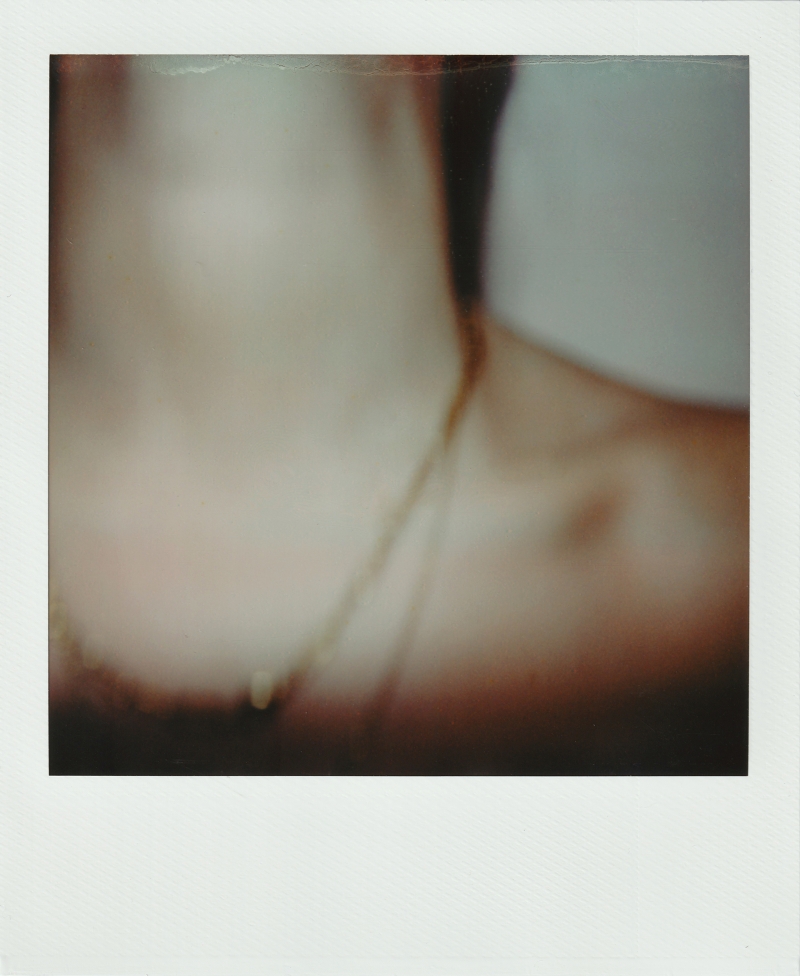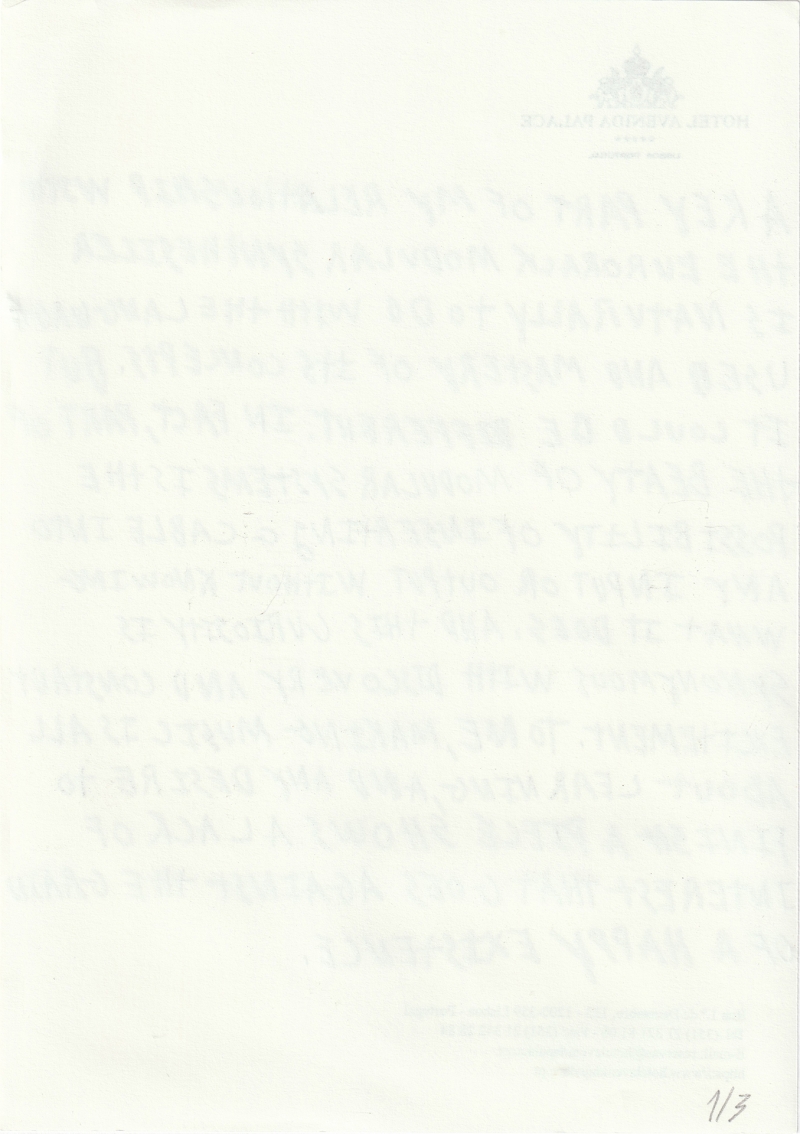
 |
 |

Video stills from "Clouds" (2021) by João Pimenta Gomes. Courtesy of the artist.
“Microsonic processes introduce the possibility of evaporation, coalescence, and mutation of sound materials, analogous to the ever-changing pattern of clouds in the sky.” (→ 1)
Five islands are at the heart of Clouds, or you can see them as five voices, João Pimenta Gomes tells me quickly. They form an archipelago of sorts at the heart of the exhibition. They communicate together through a network of synthesizers, sequencers, or filters and subwoofers. When asked, Pimenta Gomes is happy to explain how they are set up. However, beyond the technical details of how they link together, at the heart of the installation is the idea that each island is playing a composition inspired by an urban cloudscape. The work invites us to listen to a choreography of microsounds, to try and discern sound loops, patterns and progressions, and to attempt to understand each island’s language as their sounds modulate over the course of the show.
The compositions are based on the movements of clouds of steam recorded on camera from a window overlooking the rooftops of Manhattan. It is not necessarily apparent at first, but the different cloud scenes were all captured from a single viewpoint. These five short videos are shown on a small monitor coupled with a Eurorack modular synthesizer. In each, a shaft of steam oscillates with the shifting winds, light levels, and atmospheric pressure, dancing on screen in the manner of an evanescent choreography. The videos could be read as a disembodied variation on Trisha Brown’s Roof Piece (1971), which saw dancers attempting to transmit improvised movements to each other across a series of rooftops in the manner of a game of performative Chinese Whispers. In Pimenta Gomes’ videos, one can observe how the steam clouds may move in similarly affected patterns of natural activation, in a physical and visual call and response.
- (1) Curtis Roads, Rhythmic Processes in Electronic Music, 2014, quoted in João Pimenta Gomes’ Micro Ressonâncias, 2020 exhibition handout.
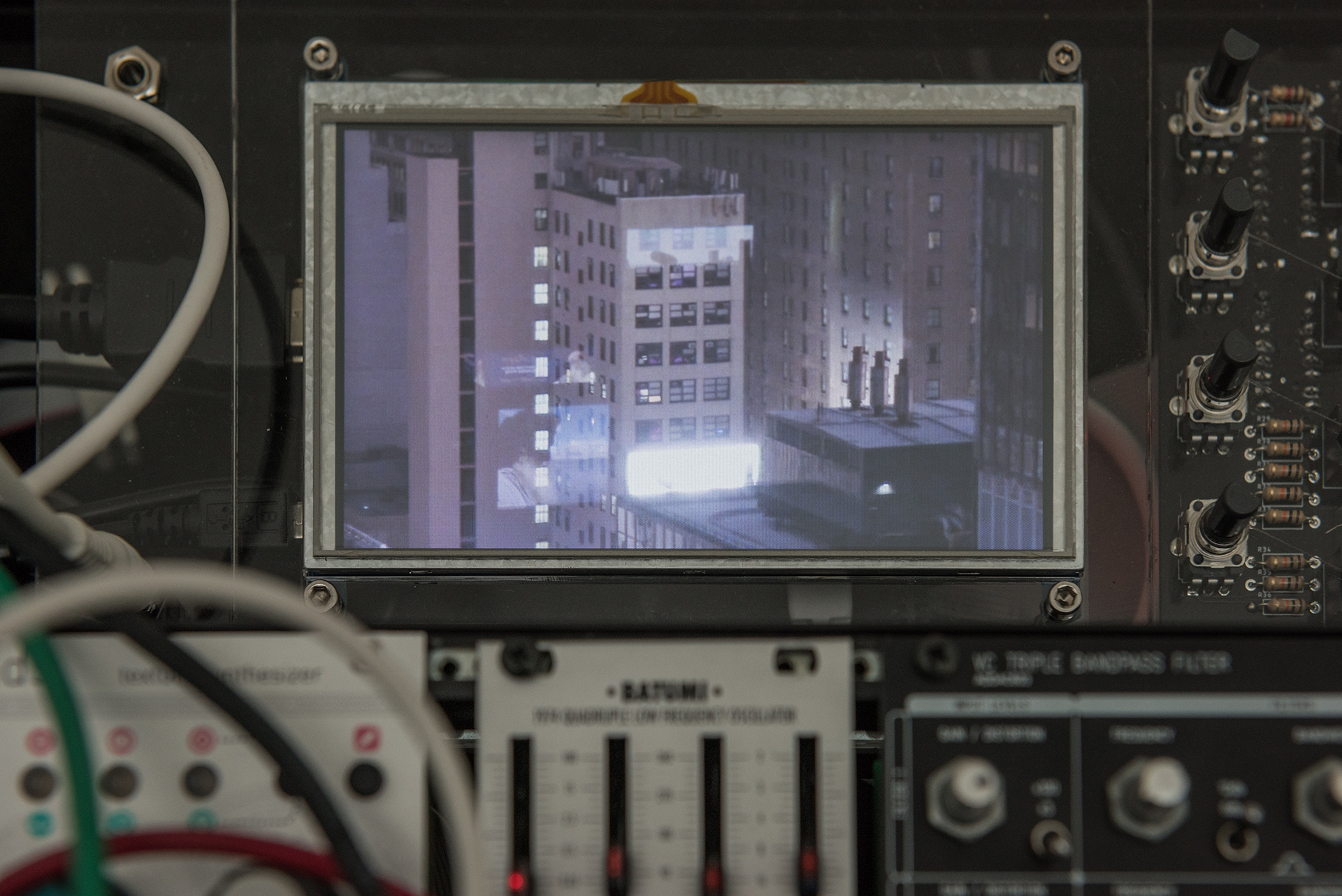
"Clouds" (2021) by João Pimenta Gomes. Details of the installation at the Gallery of the Portuguese Embassy in Berlin (Kunstraum Botschaft). Photos: Daniel Rodriguez. Courtesy of the artist and EDP Foundation, Lisbon.
Evanescent, shifting, this exhibition is titled Clouds. This might refer to the natural meteorological phenomenon of clouds, as in the videos the clouds of steam stand in stark contrast to the unmistakable New York cityscape. From the ground to the rooftops across the city, its historic and extensive ConEd system creates distinctive puffs of steam. They seem to dance and take on a life of their own in an almost teasing visual response to this imposing architectural and environmental grid. In a similar way to how Brown’s dancers responded to each other, to their bodies, and to their location, exploring corporeality within an alienating urban setting.
Clouds may also refer to the wider immaterial network between each island, to the archipelago. Cloud computing, for instance, was developed as a continuation of the dream of cybernetic connectivity, enhancing networking remotely and on demand. Communicating through signals, like Brown’s dancers, or shifting environmental conditions like the clouds of steam, knowledge and community can be searched for through back and forth. Cloud sharing can be seen as a metaphor for intercommunication in the global era.
Networks and clouds can also converge in clusters. The title is also a reference to the soundscape known as a cloud, which is produced by editing together micro sounds into clusters. Essentially it is the slicing and collaging of sound samples on a granular scale. Sound collage, which has become ubiquitous thanks to the increasingly powerful tools offered by digital technologies and synthesizers, has now reached a level of detail which enables sounds to be generated and modulated on a micro-level but also, inversely, creating a composition that is potentially infinite, like “the ever-changing pattern of clouds in the sky.” (→ 2)
- (2) Idem. Also note that an algorithmic clustering method called Chinese Whispers is also used in computer networking analysis which brings to light issues with Natural Language Processing.
If you give it time, it becomes musical information
Conversation with the artist, 4 August 2021
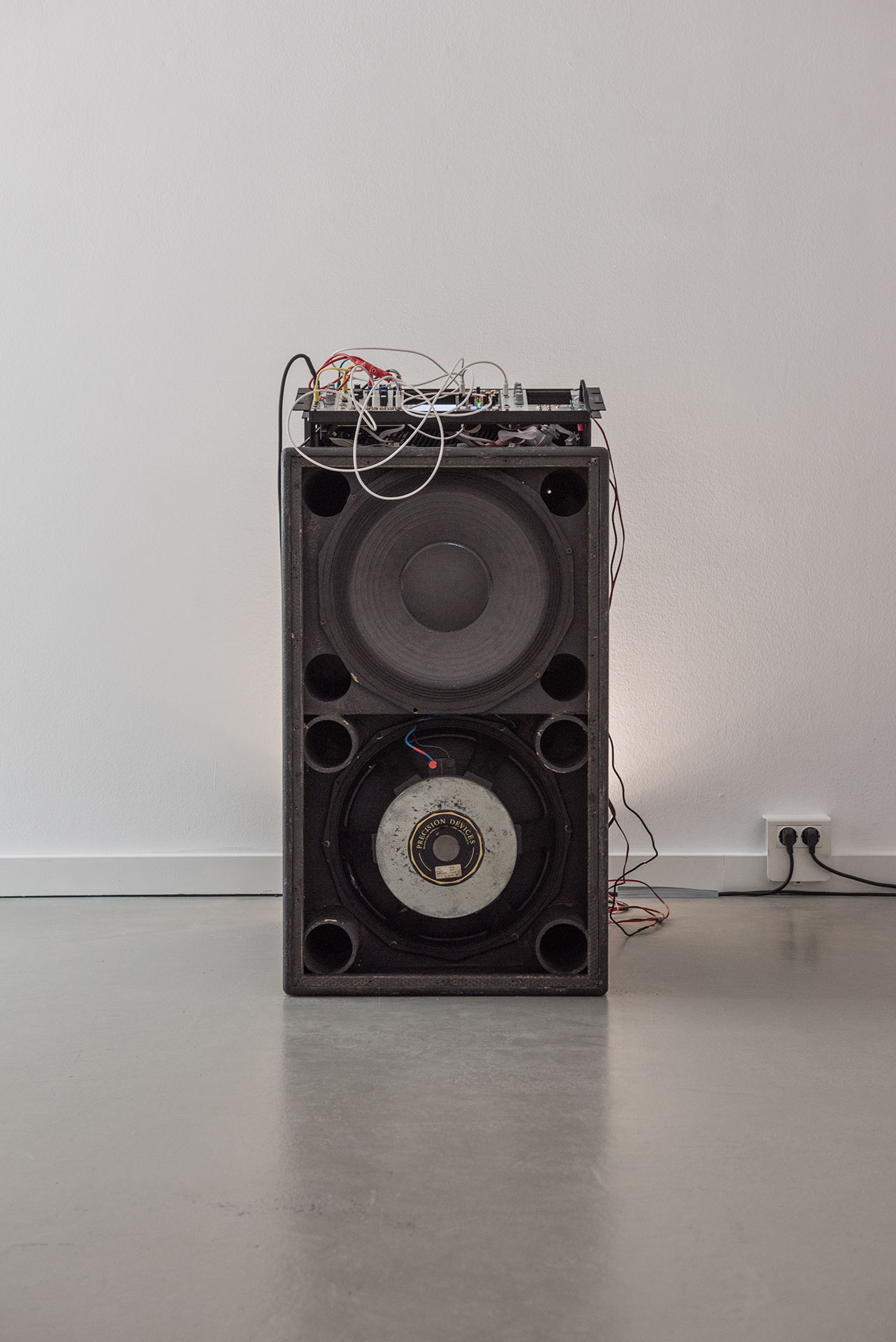 |
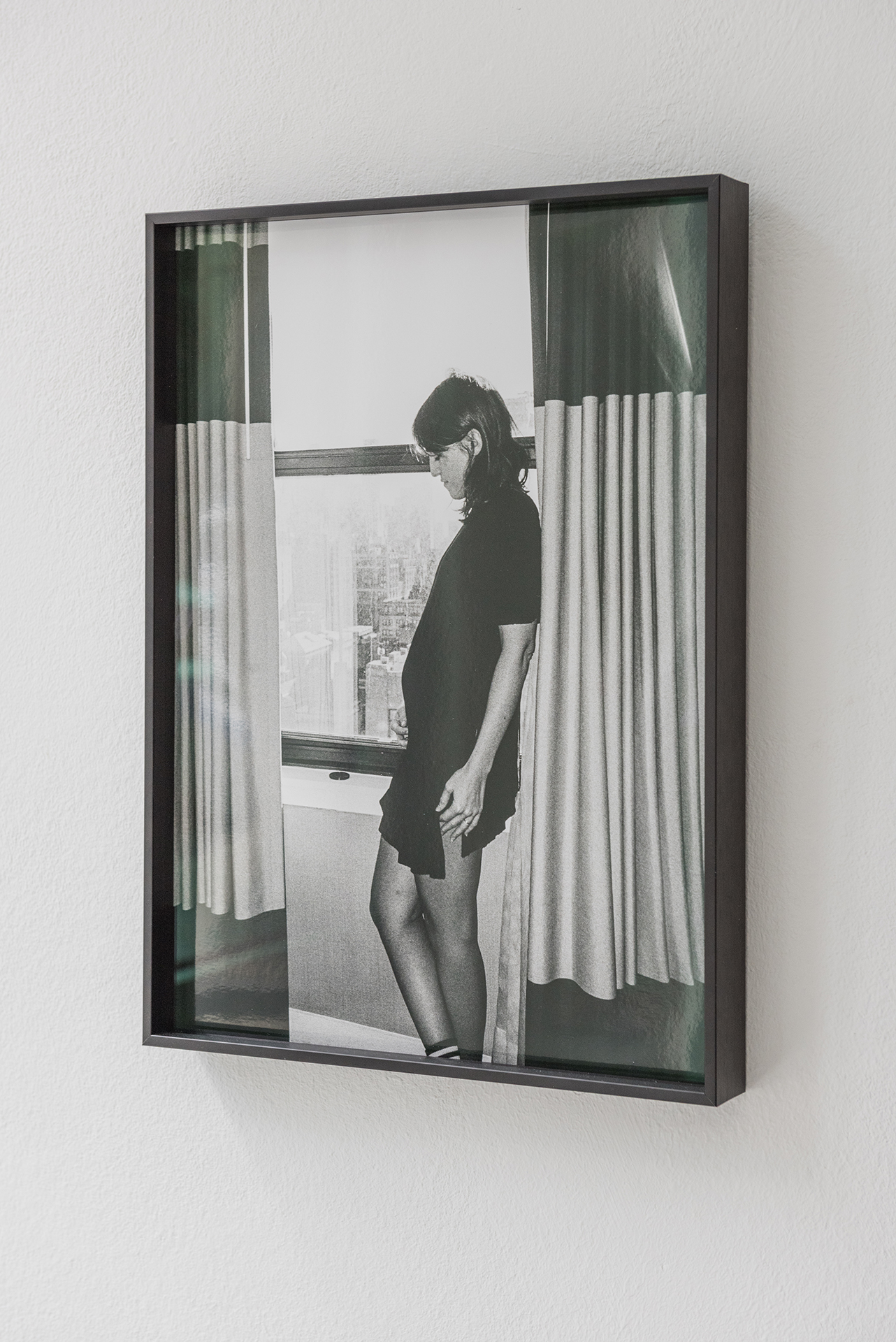 |
Pimenta Gomes has worked extensively as a collaborative musician. In this installation, he uses the framework of the exhibition to consider experiencing music over an extended period of time, stretching, fragmenting, and modulating the music’s components, and also expanding its spatial possibilities. Using pre-determined processes, and also carefully shaping his compositions, he generates his work in two stages.
First, a tightly framed composition is directed by external factors, in this case, clouds of steam. He creates the score by mapping the shape and movements of a cloud, for instance if it moves to the right or left; such a move will also cause a shift in the composition’s tones, or the cloud’s density will determine the pitch or volume at that moment. He then edits a range of specific samples, altering rhythm and texture through micro-montage, based on these five scores, to record his “voices” and their conversations. Pimenta Gomes has previously used natural feedback processes, including from domestic plants (Micro Ressonâncias [Micro Resonances], 2020), musical rocks (Trabalho de Inverno [Winter Work], 2021), and the light filtering into an exhibition space (Drum Stick Grip, 2021), to question preconceived ideas about music being generated exclusively by humans.
If music is found in the spectrum from noise to pitch, then is “musical information” defined by the viewer? That question is examined in the second stage of composition: the installation and modulation of sounds in the exhibition space (→ 4). In this phase, Pimenta Gomes installs the screens, synthesizers, sequencers, and speakers. Playing around with the placement of the five voices and reverberations created by the speakers, the sounds respond directly to the architecture of the space. Pimenta Gomes extends the analogy between music and the vocabulary of the field of visual arts to sculpting sound by thinking hard about its experience in space and time, from the granular to the envelope (→ 5). In contrast with the traditional set-ups of gigs and surround systems, the sound is meant to shift as you walk around the space; there is no single point to experience it. Continuing the metaphor of the archipelago, there should be no centre and no periphery.
- (4) Robert Worby, Notes About Composing Without Notes in the exhibition handout, “All sounds (…) exist on a continuum that extends from pitch to noise.” Worby continues, “They exist in space (they are located in space and they exist in a particular space).”
- (5) See reference to Sun Ra in the exhibition handout: “the public is a part of the music too; if somebody comes in, the acoustic changes.”

These different “voices” may connect momentarily with the viewer or stutter and escape us.
The viewer connects together the sound composition, the installation, and its architecture through their bodily experience, becoming momentarily part of this archipelagic system. They might hear clusters of microsounds modulate as they try to zoom into different harmonies, identify specific samples, recognise loops, and discern varying tempos, meanwhile questioning whether these sounds correlate or not to the video screens. These different “voices” may connect momentarily with the viewer or stutter and escape us. The mechanisms behind these sounds are visible in clear sight as part of the installation, with cables patching into the Eurorack modular synthesizers and different islands hooked up to others. The network of cables and conversations is visible, the sound information open to interpretation.
Pimenta Gomes’s tribute to the sound installations of the 1970s and other forays into experimental music of that period is acknowledged in the quotes that accompany the show: the utopia of technological exchange, the possibilities of sculpting and fragmenting sound. The boundless potential of digital sound technology is clearly apparent. However, Pimenta Gomes is also reflective about its flip side: the alienation it can engender to those who feel overwhelmed by systems and grids. He opens a space where clouds of steam can speak to each other and to us, just like Brown’s dancers attempted to connect with each other as well as the audience across city blocks, with shifting results. Balancing an interest in composition by pre-determined rules with microsonic processes and modulation, as well as the physical space and the duration of the exhibition, Pimenta Gomes takes inspiration from decentralised compositions and considers how other conductors speak to us, including through heat, light, water, and air.
Emily Butler is a curator, writer and translator. She curates the "Conversations" programme at Art Basel. She was curator at Whitechapel Gallery, London, where she lead the ongoing collaborative project Artist's Film International, curated exhibitions drawn from the collections, on commissions by artists such as Rachel Whiteread, Kader Attia, Carlos Bunga and Nalini Malani, or group exhibitions like Electronic Superhighway (2016 – 1966).
João Pimenta Gomes is a visual artist and musician based in Lisbon and trained in sound and music production,drawing and photography. In 2021, he presented Trabalho de Inverno with Pedro Tropa and Teresa Santos (Galeria Quadrado Azul, Lisbon), and in 2020 he had a solo show entitled Micro Ressonâncias (Appleton Box, Lisbon). He’s the author of “Canto”, a sound piece created by Marilá Dardot for her exhibition Interdito (Galeria Filomena Soares, Lisbon, 2017).
Clouds is a sound composition and installation specifically created by João Pimenta Gomes for a space in Berlin, the Kunstraum Botschaft (16/09–29/10/2021). The sound composition is based on a sequence of existing rhythms, recordings and samples, that are constructed and deconstructed and like they are following a score, which is only known by the author. It is a work about music and its infinite possibilities and mutations in space. The sound installation is accompanied by a set of performances.


